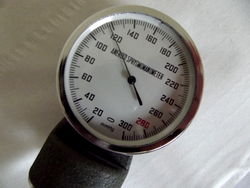Researchers have studied the effects of acupuncture for autistic children, and in particular whether scalp acupuncture may help with their language development. Twenty autistic children aged between four and seven years, were divided into two groups, and both received a nine month course of language therapy, aimed at stimulation of cognitive and verbal abilities, in order to help language impairment. In addition, one group received scalp acupuncture (treatment which makes use of some of the many acupuncture points on the scalp). Both groups showed significant improvement in cognitive and expressive language skills, but there was a markedly greater improvement in the group which had received acupuncture.
The researchers conclude that scalp acupuncture is a safe complementary modality when combined with language therapy, and has a significantly positive effect on language development in children with autism
(Scalp Acupuncture Effect on Language Development in Children with Autism: A Pilot Study. Journal of Alternative & Complementary Medicine, March 2008.)

 This trial investigated the effects of acupuncture for high blood pressure, and in particular as an add-on to conventional hypertension management eg. medication and lifestyle measures. Forty-one volunteers were allocated randomly to receive either acupuncture or sham acupuncture; the latter is where the patient is touched in a way that leads them to believe a needle has been inserted, when it has in fact not. Those patients already on medication, continued to take it. After eight weeks, the sham group showed no significant change in blood pressure, whereas the acupuncture group showed a significant decrease, from an average 136.8/83.7 to 122.1/76.8 mmHg.
This trial investigated the effects of acupuncture for high blood pressure, and in particular as an add-on to conventional hypertension management eg. medication and lifestyle measures. Forty-one volunteers were allocated randomly to receive either acupuncture or sham acupuncture; the latter is where the patient is touched in a way that leads them to believe a needle has been inserted, when it has in fact not. Those patients already on medication, continued to take it. After eight weeks, the sham group showed no significant change in blood pressure, whereas the acupuncture group showed a significant decrease, from an average 136.8/83.7 to 122.1/76.8 mmHg.